DRAFT: Preliminary internal document in review/ Do not cite
This is an internal website intended to capture current approaches and knowledge base from the Natural Sounds & Night Skies Division in order to provide guidance to the field in an easy, user friendly format. It is still under development and this version was made available solely for this internal review. Following review, and prior to formal internal agency vetting, pages will be inactivated in order to incorporate input.
- Duration:
- 5 minutes, 40 seconds
An introduction to how to incorporate acoustic resources into park planning
4. Planning Process
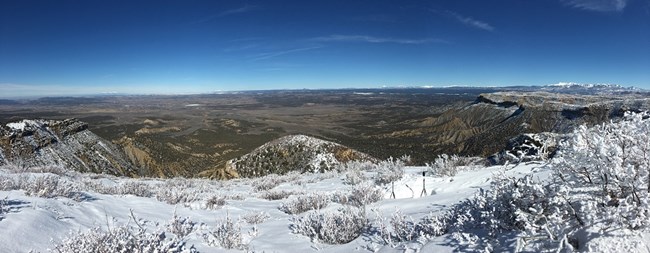
NPS uses planning as a way to apply best available science and methods to natural resource and visitor management in order to make better decisions that will benefit park resources. Through the planning process, parks become more aware of the issues and opportunities surrounding sounds and acoustic resources and their relationship to other resources and values. Parks also are better poised to make good decisions, develop meaningful partnerships and create effective policies. The acoustic environment can be affected by a multitude of NPS decisions and practices. Planning efforts related to park programs and activities such as transportation, maintenance, facilities, wilderness, natural resources, cultural resources, and law enforcement should consider acoustic resources and noise management.
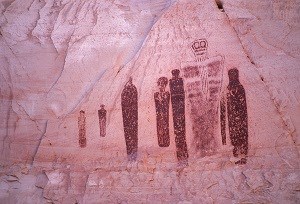
The acoustic environment is a resource with intrinsic value. It is important as a natural resource, a cultural resource, or both. It is a critical component of wilderness character, and plays an important role in wildlife communication, behavior, and other ecological processes. Results from surveys, across multiple decades, of the American public indicate that hearing the sounds of nature is an important part of the visitor experience in national parks (Haas and Wakefield 1998, Ferguson et al. 2024). Therefore, the value of acoustic environments and soundscapes is related to an array of park resources and has broad implications for park management. Since the quality of the acoustic environment is relevant in nearly every unit in the NPS System, park staff should consider the acoustic environment as a resource with inherent value in park plans and strategies.
A variety of laws, regulations, and policies direct the NPS to address acoustic resources and soundscapes in their planning process. The primary guidance for national park managers are the 2006 Management Policies and Director's Order #47. Management policy 4.9 requires parks to use appropriate planning to identify what levels of noise can be accepted within the established management purposes of parks. The pitch (frequency), loudness (decibel level), duration, and source of noise considered acceptable will vary throughout a park, and will differ between parks. Developed areas generally have more occurrences of noise, more variety in sound sources, and louder sound levels. Undeveloped areas generally have fewer noise occurrences and fewer sources of noise. Undeveloped and backcountry areas can be influenced by noise generated in more developed areas; low frequency or deep, rumbling sounds of motors are most commonly heard because these frequencies travel farther in the environment. Further, culturally significant areas will have cultural soundscapes that include human and natural sounds.
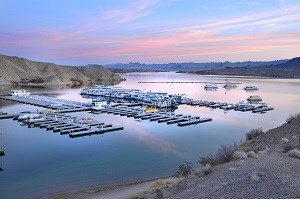
Director's Order #47 builds on the principles in Management Policies, but goes on to direct how and when to consider acoustic resources in park management. Through this order, parks are guided to manage noise by identifying noise sources, minimizing noise from park operations, considering the acoustic environment in park planning documents, and promoting park sounds and noise management through communication, education and outreach.
Central to the NPS wide planning framework is the park planning portfolio—the assemblage of planning documents that guide park management and decision making and satisfy law and policy. Director’s Order #2 clarifies that the totality of documents in a park’s planning portfolio fulfills a park’s planning needs, including meeting the requirements for a general management plan (GMP), and provides guidance on a variety of planning documents that guide park decision making, including foundation documents, comprehensive plans, strategic plans, and implementation plans. Director’s Order #47 compliments Director’s Order #2, emphasizing how acoustic resources and the acoustic environment should be considered in a variety of planning types and situations, including standalone acoustic resource management plans where and when necessary.
In addition to these service-wide directives, there are park-specific references about the importance of protecting intrinsic soundscapes and related values and resources embodied in parks' enabling legislation. For example, in parks' establishing legislation and supporting information you can find terms such as "ecological integrity," "extensive, unaltered natural ecosystems" [PDF], "remote wildness and solitude," "serenity," "a contemplative visitor experience," or "promoting solemn appreciation," in relation to a park's purpose and significance. Throughout the planning process it is important to have a clear understanding of your park's enabling legislation and any other relevant laws, regulations, policies, or existing planning documents that set the framework for acoustic resource management. Establishing a strong justification for noise reduction and soundscape protection makes subsequent management actions easier to implement and facilitates coordination among other stakeholders to address threats to park resources.
4.1 Establishing Acoustic Zones
- Acoustic zones are areas that should be managed in a similar fashion (same objectives, thresholds, and indicators)
- Acoustic zones may correspond to one or more park management zone

4.2 Acoustic Resource Objectives
- What is the existing condition?
- What is the desired condition and what acoustic conditions are being protected?
- What are the interrelationships of the various resources influenced by acoustic resources and/or noise?
- What park activities are fundamental to visitor experience and to park purposes?
- Where, when, and for how long are certain activities appropriate?
- How can parks minimize impacts of administrative and visitor activities on the acoustic environment?
For example, Zion National Park's GMP [PDF] identifies seven management zones, each with different soundscape objectives. The zones include: frontcountry high development zone, frontcountry low development zone, transition zone, Primitive zone, Pristine zone, Research natural area zone, and Administrative zone. Acoustic resource management is also addressed in the natural resources, visitor use and experience, issues and concerns, and future planning sections of the GMP. The soundscape objectives are further described in the 2010 Soundscape Management Plan (SMP) that tiered from the GMP (see below). Since the soundscape objectives for Zion are well developed and resonate in both GMP and SMP, we include them in this reference manual in order to demonstrate the breadth of objectives that a park could establish.
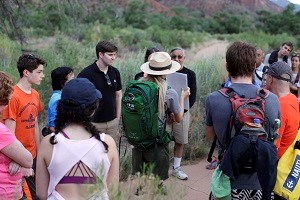
- Natural sounds are audible and discernable, with common noise intrusions by visitors and park operations that are concentrated at locations near roads and heavily developed areas. ·
- Active intensive management is used to maximize noise free intervals and limit the intensity and duration of noise intrusions.
- Noise levels that interfere with general conversation rarely occur and are of limited duration except when caused by emergency services, search and rescue operations (sirens, search and rescue aircraft), and park operations (road repairs, grounds and building maintenance).
- Noise levels that interfere with interpretive programs do not occur except when caused by emergency services and search and rescue operations (sirens, search and rescue aircraft).
- Noise levels that exceed thresholds for sleep interruption rarely occur.
- Noise levels at common rock climbing areas should not interfere with effective communication among climbers. Noise levels that mask important auditory signals for wildlife should be uncommon and should be limited to locations near roads and heavily developed areas.
- Noise levels that affect wildlife behavior, distribution and numbers should be uncommon and should be limited to locations near roads and heavily developed areas.
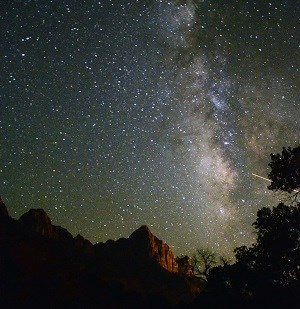
- Only natural sounds are audible and discernable, except for short duration, infrequent noise events.
- Sound levels that interfere with general conversation are very rare and are of limited duration except when caused by emergency services, search and rescue operations (aircraft), and approved park operations (aircraft, motorized/mechanical tool use).
- Sound levels that exceed thresholds for sleep interruption are extremely rare.
- Sound levels at rock climbing areas and technical canyons should not interfere with effective communication among climbers and canyoneers.
- Sound levels that mask important auditory signals for wildlife should be rare. Sound levels that affect wildlife behavior, distribution, and numbers should be rare.

4.3 Indicators and thresholds
Many park units have a variety of zones ranging from front country and developed areas to remote backcountry and wilderness. Sounds that are appropriate in some areas of the park are inappropriate in other zones. Outlining in park plans appropriate and inappropriate noise sources is an essential component of resource protection. When developing plans, such as transportation or visitor use management plans that include specific resource goals associated with the acoustic environment, it is important to set objectives that are measurable and rooted in the acoustic conditions and management goals.So that park managers are able to track progress towards achieving the goals and objectives, condition indicators and measurement thresholds should be established for the resource. Indicators are measurable, manageable proxies for desired park conditions which are responsive to thresholds, defined as numerical expressions of desired conditions for indicators. For example, the National Park Service might use durations of noise-free intervals as a good indicator related to providing visitors opportunities to experience natural sounds and quiet. A good threshold for this indicator might specify that at least 90% of visitors will experience at least one interval of 15 minutes or more that is free of human-caused noise while visiting the park.
- Percentage of any hour when motorized noise is audible.
- Number of motorized noise intrusions per day that exceed natural ambient sound.
- Maximum motorized noise level. For more information, see Table 2-5 from the BCMP.
Once thresholds have been identified, it is necessary to conduct monitoring to determine whether or not goals are being met. In the event that conditions do not meet threshold goals, noise mitigation efforts should be identified and implemented. Subsequent monitoring should identify the effectiveness of the mitigation. For more information on adaptive management, see this technical guide [PDF] or the Interagency Visitor Use Management Council guidebooks. Using an indicators and thresholds approach for monitoring and managing resource conditions is a common and accepted practice, but may not be necessary for every scenario.
4.4 Develop Mitigation Strategies to Achieve Objectives and Standards
Once goals, objectives, indicators, and thresholds are established for management zones in your park, it is time to determine mitigation strategies that will protect, preserve and restore the acoustic resources of the park. Just as acoustic conditions are unique to each place, mitigation activities will be unique to your park. Further, each park has other resource management goals and human resource or financial parameters that will shape what mitigation is appropriate and logical for the park. See Chapter 6: Common Noise Sources and Mitigation.
4.B Planning Documents
For examples of specific planning documents that address protection of the acoustic environment see 4.B Addressing the Acoustic Environment in Common Planning Documents.
RM-47 Home
Next Chapter 5: Impact Assessment
Appendix A: Glossary
Appendix B: Authorities
Last updated: June 18, 2024
